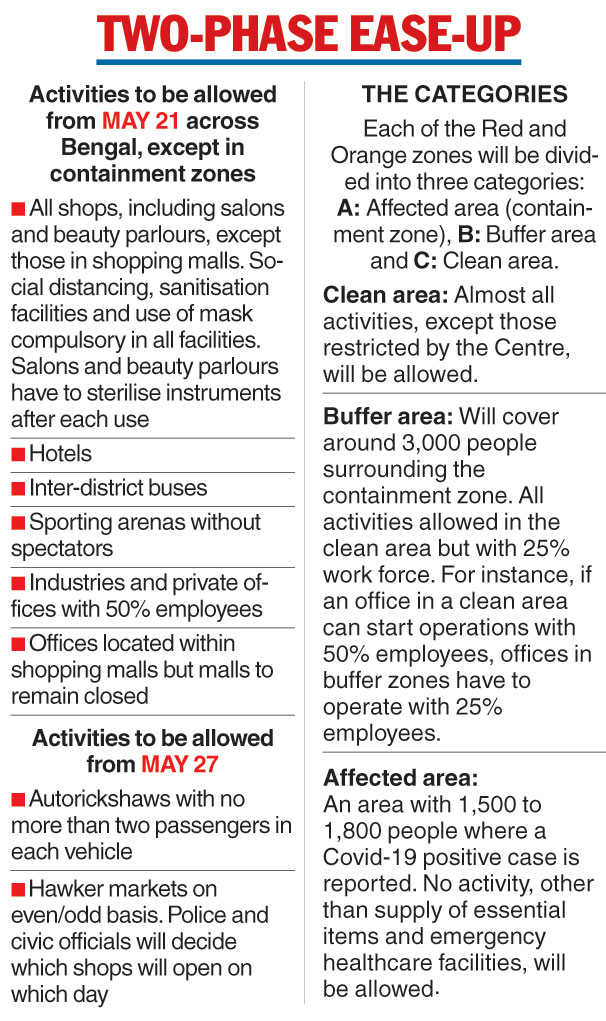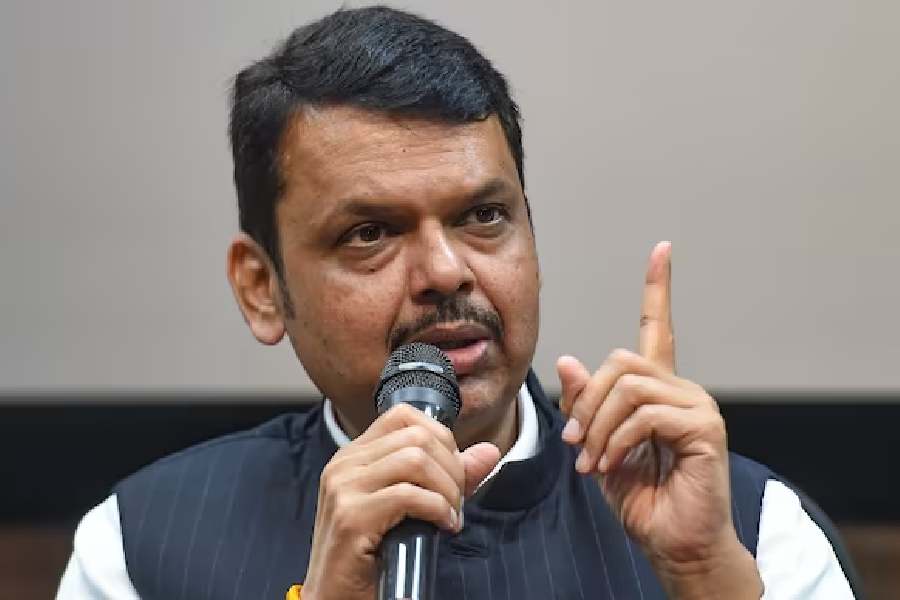Chief minister Mamata Banerjee on Monday said the area of Covid-19 containment zones across Bengal would be reduced and several activities allowed outside these zones in two phases — from May 21 and May 27.
“Till now, containment zones have consisted of larger areas. As a result, everything had to be closed down within these areas. Now, we have decided to create booth-wise containment zones,” the chief minister said at Nabanna.
The announcement revealed the Bengal government’s keenness to restart economic activities in Covid red zones across the state so that ordinary people could get back to work and start earning in areas outside the containment zones.
Mamata said each containment zone would be surrounded by a buffer area, while the entire area outside the buffer area would be a clean area, elaborating on her government’s plans for easing restrictions in the fourth phase of the nationwide lockdown.
The chief minister made it clear that no activities would be allowed inside the containment zones, where the lockdown would remain in force.
In the case of the buffer areas, almost all activities that the government is allowing in clean areas can be undertaken with the condition of employing 25 per cent of the workforce.

Mamata then elaborated on how the state government had categorised red zones and orange zone — or areas from where Covid-19 cases have been reported.
“In the case of red (as also orange) zones, we have divided them into three categories — A, B and C,” she said. “A is the containment zone where nothing will be allowed. B will be the buffer area, where some activities will be allowed. C is the clean area, where almost everything will be made functional.”
Sources said since the Centre had given the states the liberty to identify containment zones and declare restrictions, the state government had taken the opportunity to tighten surveillance in the containment zones while initiating steps towards normality in the other areas.
“Earlier, containment zones were being created over an area that housed nearly 4,000 to 5,000 people after a positive case was reported from the area. Now, the area is being reduced to one with a population of 1,500 to 1,800. It is more scientific because testing of all suspected patients or tracing contacts is easier in a smaller area,” a senior official said.
Sources also said the buffer areas were being created to ensure that proper surveillance is maintained in the area, where shops selling essential items would be allowed to remain open but several other restrictions would be in place.
“If the containment zones consisted of 1,800 residents, the buffer zone would be an area surrounding the containment zone with about 3,000 people,” said another official.
The chief minister said she would not implement the Centre’s advice for a 7pm-7am curfew in the state, but requested that nobody – other than those involved in essential services -- stay outside their home after 7pm.
“We are not clamping curfew in the state. But a lockdown is there and I request you not to stay outside after 7pm,” the chief minister said.










